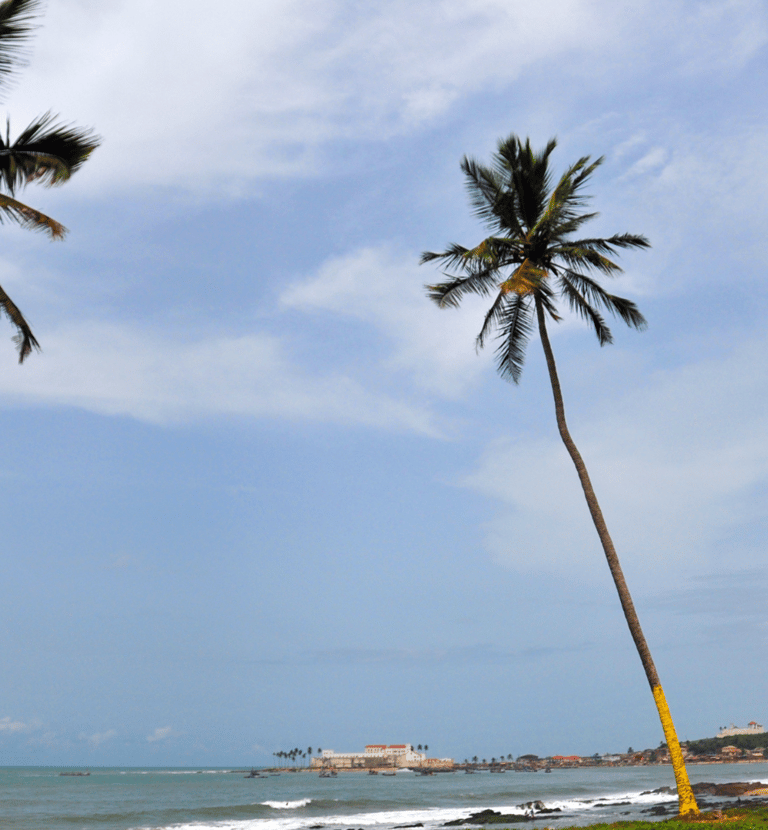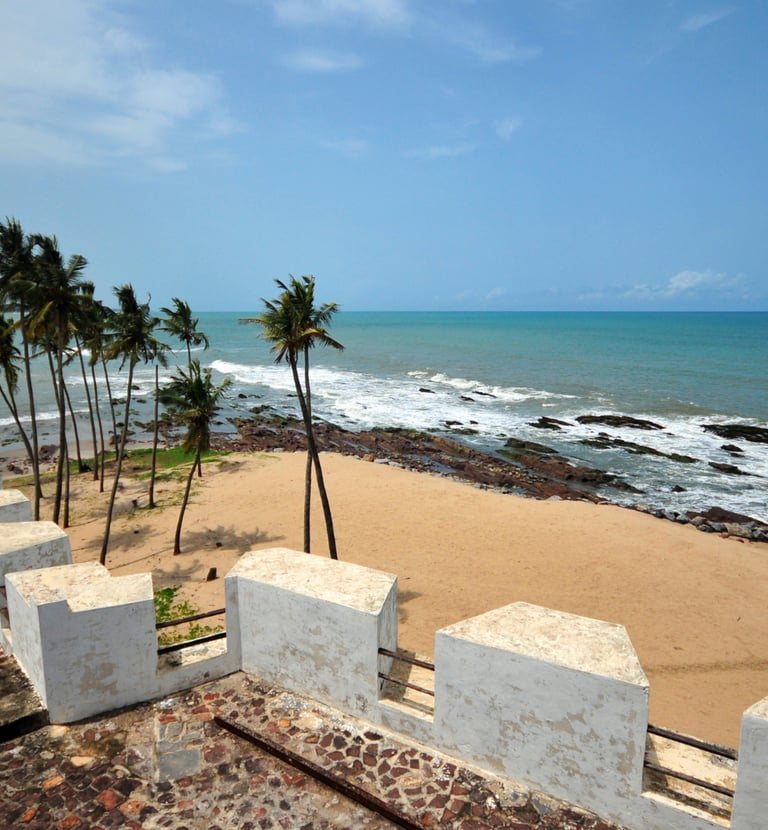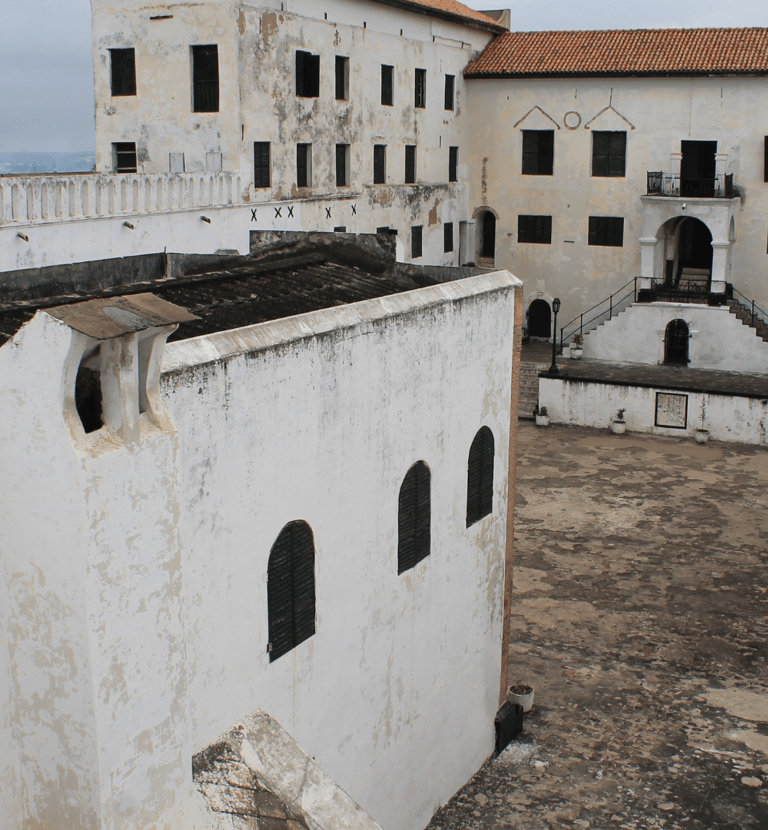The Profound History of Elmina Castle:
From Trade Fortress to Slave Trade Hub
8/2/20246 min read
The Profound History of Elmina Castle: From Trade Fortress to Slave Trade Hub
Elmina Castle, officially known as São Jorge da Mina (St. George of the Mine), was constructed by the Portuguese in 1482 on the coast of present-day Ghana. It stands as the first European building south of the Sahara Desert and was initially established to protect the Portuguese monopoly over the gold trade. Elmina, meaning "the mine," highlighted the area's richness in gold, which was highly sought after in Europe. The fortification served as a trading post and a defensive structure, designed to safeguard the Portuguese from rival European powers and indigenous African groups.
The castle's design included warehouses, living quarters, and fortifications. Its strategic coastal location enabled efficient loading and unloading of goods, including gold, ivory, and later, slaves. This stronghold represented the beginning of European colonization and exploitation of African resources, marking a significant moment in global trade history.
The Slave Trade
By the early 16th century, the economic focus of Elmina Castle shifted from gold to human trafficking. The castle became integral to the transatlantic slave trade, one of history's most egregious human rights violations. Captured Africans from various parts of West Africa were forcefully brought to Elmina, where they were imprisoned in squalid dungeons awaiting shipment across the Atlantic.
The conditions in these dungeons were horrific. Men, women, and children were held in dark, overcrowded, and unsanitary spaces, often for months. They suffered from malnutrition, disease, and abuse. The "Door of No Return" at Elmina Castle symbolize their final exit from Africa, marking the start of a brutal journey across the ocean to the Americas, where they would face enslavement on plantations.
Between the 16th and 19th centuries, millions of Africans were shipped through Elmina Castle. The psychological and cultural impact on those left behind was profound, as entire communities were decimated. This trade was driven by European demand for labour in the New World, profoundly altering African societies and economies.
Transition of Control
Elmina Castle changed hands multiple times, reflecting the shifting dynamics of European colonial ambitions. In 1637, the Dutch West India Company captured the castle from the Portuguese after a fierce battle. The Dutch expanded and fortified the structure, continuing to use it as a major hub for the slave trade.
In 1872, as part of a broader agreement to exchange territories, the British acquired Elmina Castle from the Dutch. This transfer marked the end of Elmina’s direct involvement in the transatlantic slave trade, as Britain had officially abolished the practice in 1807. However, the legacy of slavery continued to affect the region for many years
With Ghana's independence from British colonial rule in 1957, Elmina Castle became a significant historical site. Today, it stands as a UNESCO World Heritage Site, preserved to educate future generations about the impacts of the transatlantic slave trade and European colonialism.
Significance of Touring Elmina Castle for Descendants of the African Diaspora -
Emotional and Spiritual Connection
For descendants of enslaved Africans, visiting Elmina Castle is a deeply emotional and spiritual pilgrimage. The castle serves as a tangible link to their ancestors' experiences, offering a visceral connection to their heritage. Walking through the dark dungeons and standing at the "Door of No Return" can evoke powerful emotions, including sorrow, anger, and empathy, providing a space for reflection and mourning.
Healing and Catharsis
The journey to Elmina Castle can be a cathartic experience. Confronting the stark realities of the slave trade allows visitors to process the trauma carried through generations. This confrontation can lead to a sense of healing and understanding, fostering personal and collective resilience. The act of acknowledging and honouring the suffering of ancestors can be a profound step towards emotional relief and reconciliation with the past.
Educational Insight and Cultural Reconnection
Touring Elmina Castle provides invaluable educational insights. It offers a deeper understanding of the historical context and the systemic nature of the transatlantic slave trade. This knowledge is crucial for descendants of the African diaspora, as it enriches their awareness of their cultural roots and the struggles endured by their forebears.
The experience also serves as a powerful reconnection to African heritage. It highlights the rich cultural history and resilience of African societies before and after the disruptions caused by slavery. This reconnection fosters a sense of pride and identity, emphasizing the strength and perseverance of African cultures.
A Call to Action
Visiting Elmina Castle is not only a journey of personal significance but also a call to action for preserving and promoting African heritage. It encourages descendants of the diaspora to engage in cultural preservation, education, and advocacy. By understanding and sharing their history, they can contribute to a global acknowledgment of the injustices of slavery and support efforts towards racial justice and equality.
A Life-Necessary Journey
For the African diaspora, making the pilgrimage to Elmina Castle is a vital journey. It is an opportunity to honor the memory of those who suffered and to reconnect with a rich and resilient cultural heritage. The experience is transformative, offering profound emotional release, educational enlightenment, and a strengthened sense of identity. This journey is not just a visit to a historical site but a powerful affirmation of heritage, history, and the enduring spirit of African peoples.
Ancestral Homeland Tours by Friends of Asebu Pan African Village
Friends of Asebu Pan African Village offer a life-changing experience through our Ancestral Homeland & Investment Tour. These tours provide a unique opportunity for members of the African diaspora to explore and connect with Ghana's rich heritage and history. Participants can engage deeply with the past, understanding the historical contexts of places like Elmina Castle, while also looking forward to the future by participating in the country's development.
The tours are designed to be immersive, offering not just historical insights but also cultural engagements, community interactions, and opportunities for investment in Ghana's future. This journey fosters a deeper connection to African roots, creating a sense of belonging and purpose.
To book your tour or for more information, visit Friends of Asebu Pan African Village. This journey promises to be an enriching and transformative experience, making it an essential part of understanding and embracing your heritage.





